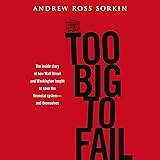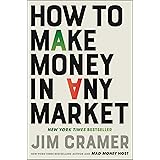A systematic approach to Gold Futures scalping strategy is often considered paramount for navigating volatile markets effectively. This particular strategy focuses on identifying high-probability setups during the London session, leveraging institutional concepts like Fair Value Gaps and order blocks. The accompanying video provides a detailed walkthrough of a successful trade, highlighting the practical application of these technical principles in real-time market conditions. Understanding the interplay between various timeframes and specific market dynamics can significantly enhance a trader’s decision-making process.
Successful scalping on gold futures demands a meticulous methodology, moving beyond simple price action analysis. This article explores the core components of the demonstrated strategy, expanding upon the video’s insights into multi-timeframe analysis, understanding liquidity, and pinpointing precise entries. By integrating insights from higher timeframes with granular execution on lower timeframes, traders are positioned to capitalize on short-term market inefficiencies. The emphasis on continuation trading, particularly for assets like gold, underscores a pragmatic approach to market participation.
Establishing Directional Bias: The Higher Timeframe Perspective
Identifying the overarching market direction on a higher timeframe is consistently regarded as the foundational step in any robust Gold Futures scalping strategy. The one-hour chart is utilized to establish this crucial directional bias, acting as a compass for subsequent analysis. In the presented trade, gold was observed to be in a strong, sustained bullish uptrend, exhibiting a consistent pattern of upward movement. This strong momentum suggests that attempts to counter-trend would be considered low-probability endeavors, underscoring the importance of trend adherence.
During periods of pronounced market strength, traditional retracement levels, such as those derived from Fibonacci tools, often fail to materialize. Price simply continues its established trajectory without significant pullbacks. In such scenarios, focusing on order blocks becomes a viable alternative for identifying potential areas of support or resistance. Order blocks represent significant institutional buying or selling pressure, often acting as pivot points where price previously reacted strongly. Their repeated respect by the market serves as confirmation of ongoing directional conviction.
Recognizing the Role of Order Blocks and Market Structure
Order blocks are specific candlestick patterns that indicate institutional accumulation or distribution, offering insights into where significant market participants have placed their orders. These zones are frequently revisited by price, providing opportunities for trend continuation or reversal. When gold exhibits relentless bullishness, as observed over several days, order blocks consistently act as reliable support levels. This sustained respect for order blocks suggests that institutional buying interest remains strong, pushing prices higher without deep corrective moves. Waiting for deep retracements under these conditions can lead to missed opportunities, as the market simply keeps moving.
Monitoring the market’s reaction to these structural points provides invaluable confirmation of the prevailing trend. The continuous upward movement in gold, respecting successive order blocks, establishes a clear framework for traders. It signals that the path of least resistance is to the upside, encouraging a bias toward long positions. This understanding helps in setting the overall market context, allowing traders to align their scalping efforts with the dominant force in the market rather than fighting against it.
Executing with Precision: Fair Value Gaps and London Session Dynamics
Once the higher timeframe bias is confirmed, the strategy transitions to lower timeframes, specifically the 15-minute and 5-minute charts, to pinpoint precise entry and exit points. This step involves meticulous analysis of Fair Value Gaps (FVG) and their inversions, which are considered key indicators of market inefficiency and potential liquidity grabs. A Fair Value Gap is an area on the chart where institutional orders have caused price to move rapidly, leaving an imbalance that the market often seeks to fill or ‘rebalance’. An inversion of an FVG suggests a shift in market sentiment or the establishment of new support/resistance. The observation of a 15-minute bullish FVG inversion, followed by the printing of new bullish FVGs, provides significant confluence for taking a long position.
The London session, typically beginning around 3:00 AM EST, is renowned for its heightened liquidity and increased volatility, presenting optimal conditions for scalping. This specific timeframe often sees significant institutional order flow, leading to clear directional moves. The strategy emphasizes waiting for this surge in volume to confirm setups, as early moves can sometimes be less reliable. The confluence of a bullish higher timeframe bias, combined with specific FVG patterns on the 15-minute and 5-minute charts during the London open, establishes a high-probability entry signal. Such precise timing allows traders to capture rapid price movements efficiently.
Leveraging Fair Value Gaps and Inversions for Entries
Fair Value Gaps are crucial for identifying areas where price has moved inefficiently, often indicating where future liquidity may be targeted. On the 15-minute chart, the strategy involves observing a significant downward move that creates a bearish FVG. For a long entry, traders wait for price to then invert this bearish FVG, meaning it trades back above the gap and closes within it, effectively turning it into a bullish FVG. This inversion signals that the bearish pressure has subsided, and buyers are regaining control, converting a previous resistance area into potential support. Subsequently, the creation of new bullish FVGs further confirms the upward momentum, providing additional conviction for a trade entry.
Further refinement is achieved by dropping down to the 5-minute chart, where similar FVG inversions are sought for even tighter entry points. The expectation is to see price respect these newly formed bullish FVGs, indicating strong buying interest. The combination of inverted 15-minute and 5-minute FVGs, alongside the higher timeframe bullish bias, creates a powerful setup. Stop losses are typically placed strategically below the candle that created the entry FVG, or below a key structural point, minimizing potential losses while preserving capital effectively. This layered approach ensures that multiple confirmations are met before capital is committed to a trade.
Integrating Asian Range Confluence and Risk Management
The Asian Daily Range (ADR) and its equilibrium point (0.5 level) provide essential contextual information for London session trading. The Asian session, characterized by lower liquidity compared to London or New York, often sets the initial boundaries or ‘range’ for the day. Its equilibrium, the 50% midpoint of this range, can act as a significant pivot point. In the demonstrated strategy, price failing to break below the 0.5 equilibrium of the Asian range during the London open, combined with bullish FVG inversions, provides a strong indication of continued buying pressure. This confluence suggests that Asian buyers remain in control and that London participants are likely to extend this momentum. The use of an indicator like DR ADDR V1 simplifies the identification of these critical levels.
Targeting profits in scalping often involves aiming for significant structural highs, such as the Asian high, which represents a clear resistance level established earlier in the trading day. While an initial target might be set for a conservative 1.82 to 2R (risk-reward) trade, market conditions can sometimes warrant more ambitious targets. The example trade initially aimed for the Asian high but was later adjusted to 4R due to exceptional bullish momentum. This dynamic adjustment reflects an understanding of market strength and the potential for extended moves, allowing traders to maximize gains when opportunities arise. Even a 10R London trade, though rare, demonstrates the immense potential of capturing explosive moves with proper risk management and trend alignment.
The Psychology of Continuation Trading and Profit Targets
Trading with the trend, often referred to as continuation trading, significantly improves the probability of successful outcomes, especially in strongly trending assets like gold and NQ (Nasdaq 100 futures). The speaker emphasizes avoiding attempts to predict reversals in such bullish markets, as this frequently leads to frustrating losses. Instead, consistently aligning trades with the established bullish bias simplifies the trading process and reduces cognitive load. Gold, in particular, has shown persistent upward momentum over extended periods, making a bullish bias a default setting for many traders. This approach leverages the power of inertia, allowing the market’s dominant force to propel trades into profit. The emphasis on staying bullish on gold simplifies the daily bias decision, allowing traders to focus on execution.
Profit targeting is a critical component of risk management, ensuring that profitable trades are captured effectively. While initial targets can be set at clear structural levels like Asian highs, a flexible approach is often beneficial. Observing the strength of price action, particularly explosive candle movements, can prompt traders to adjust their targets dynamically. This might involve removing a predetermined take-profit order and trailing a stop loss instead, aiming to capture larger moves. The confidence to allow winning trades to run, balanced with the discipline to protect capital, is a hallmark of experienced scalpers. This adaptability maximizes potential gains while still adhering to a predefined trading framework, ensuring disciplined yet opportunistic market participation.











